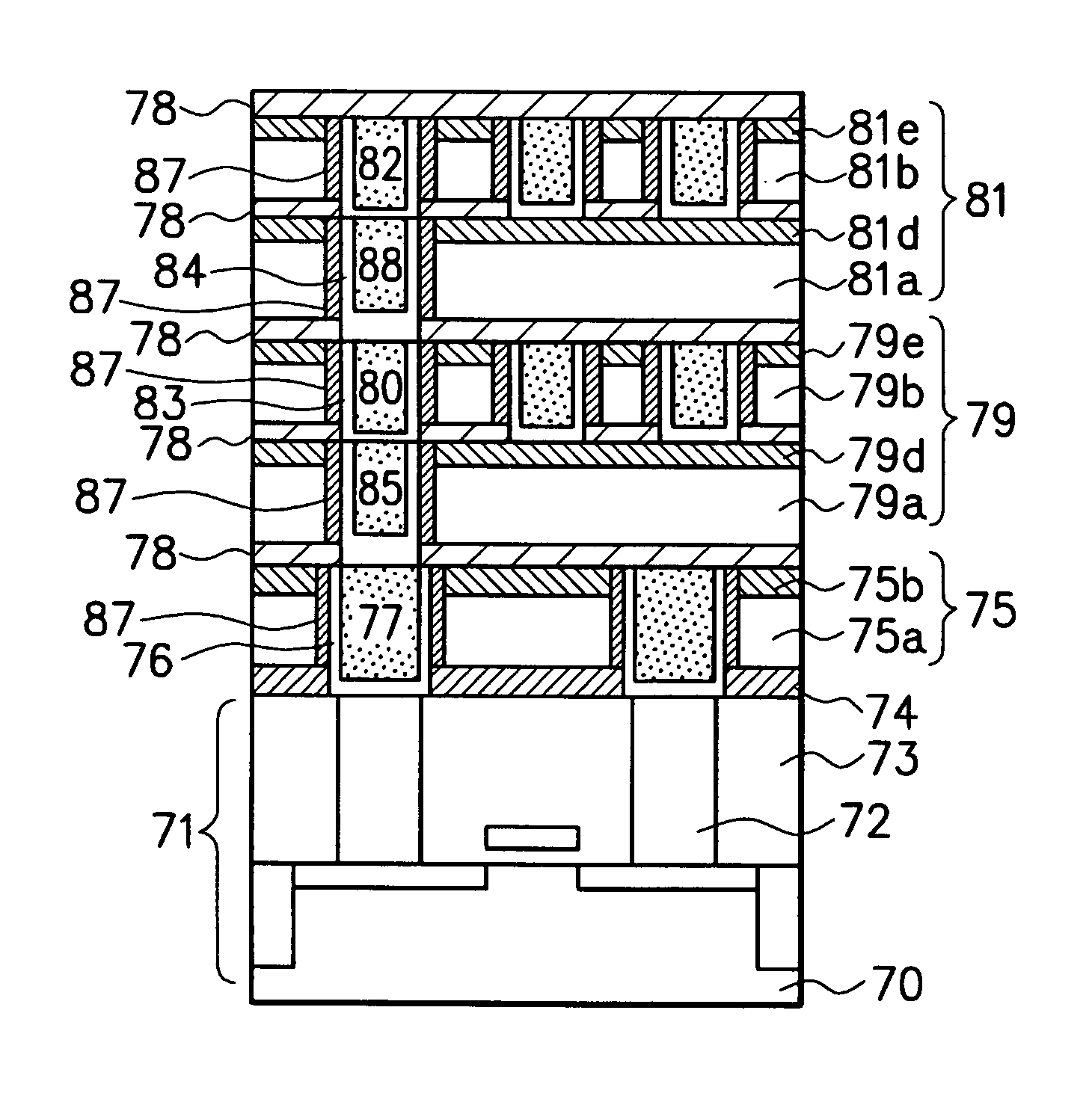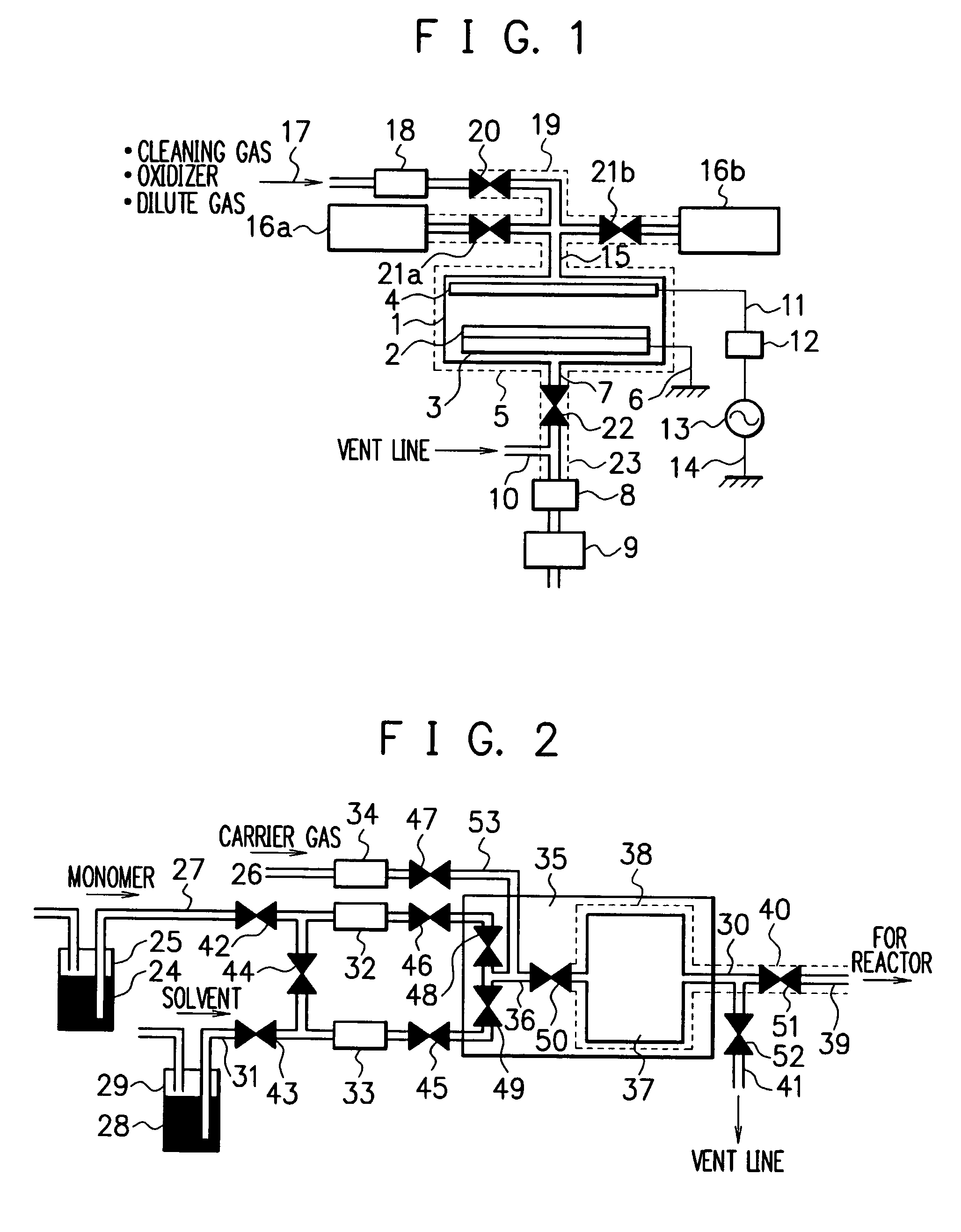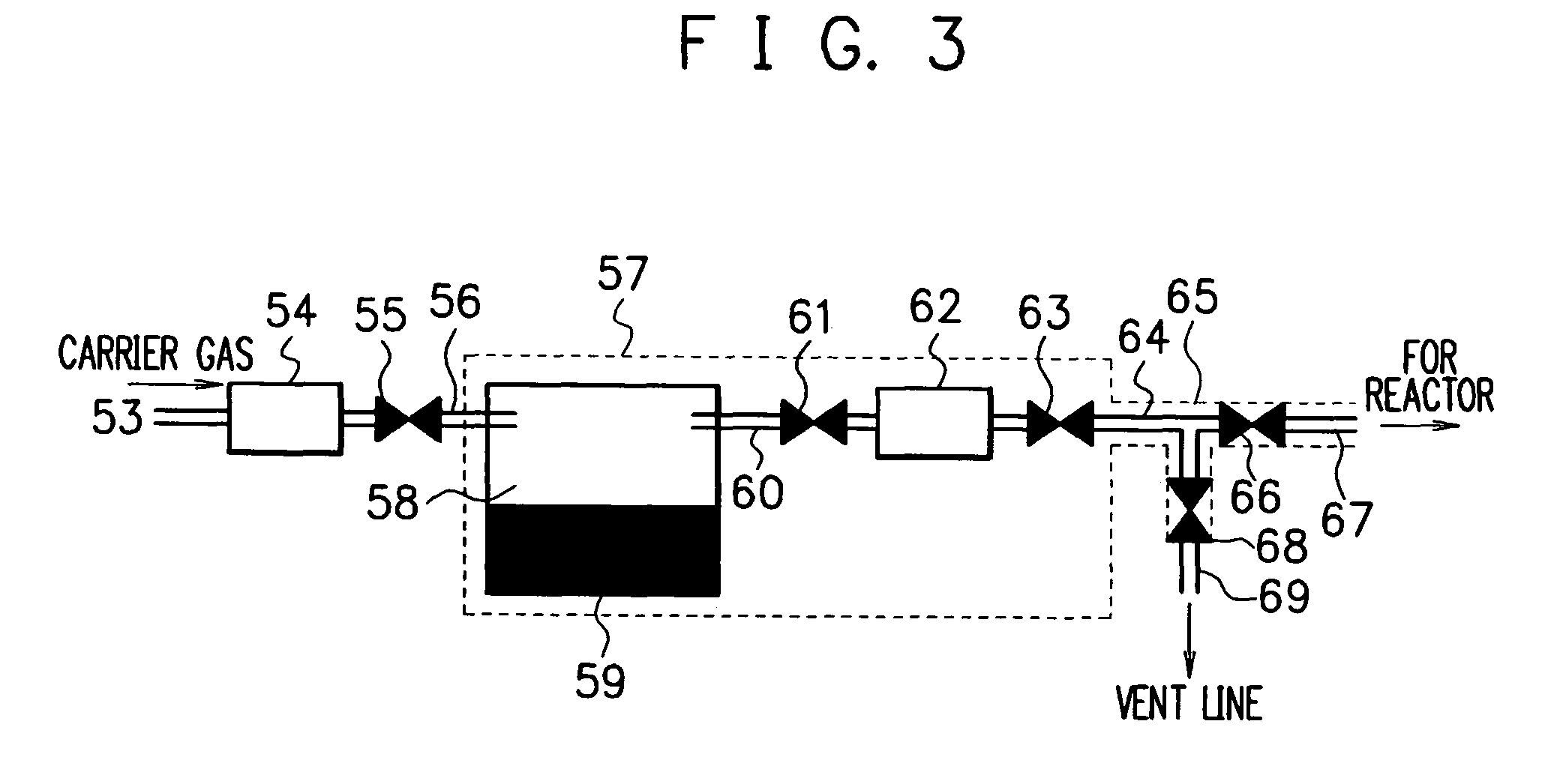Porous insulating film, method for producing the same, and semiconductor device using the same
a porous insulating film and semiconductor technology, applied in the direction of semiconductor/solid-state device details, coatings, chemical vapor deposition coatings, etc., can solve the problems of deteriorating circuit operation speed, increase in wiring delay, and increase in wiring delay
- Summary
- Abstract
- Description
- Claims
- Application Information
AI Technical Summary
Benefits of technology
Problems solved by technology
Method used
Image
Examples
first embodiment
[0120]As a first embodiment to practice the present invention preferably, explained is an insulating film formed using, as starting material, a cyclic organic silica compound raw material which has a cyclic silica skeleton in its molecule, wherein at least one unsaturated hydrocarbon group is bound with the cyclic silica skeleton.
[0121]The insulating film according to this embodiment is formed using tetravinyl-tetramethylcyclotetrasiloxane (TVTMCTS) monomers as one of the cyclic organic silica compound raw material which has a cyclic silica skeleton and in which at least one unsaturated hydrocarbon group is bound with the cyclic silica skeleton in its molecule.
[0122]For comparison, other insulating films were also formed using two kinds of material different from that of the insulating film in this embodiment.
[0123]One of these insulating films (first comparison insulating film) was formed using tertiary butyltriethoxysilane monomers (TBTES) represented by the formula (14), which is...
second embodiment
[0159]In this embodiment, a process was carried out in which a trivinyltriisopropylcyclotrisiloxane (3V3IPC3S) monomer represented by the formula (4) was used as the raw material to grow a layer insulating film. The cyclic organic siloxane of 3V3IPC3S (n=3) contains less cyclic siloxane skeletons than the cyclic organic siloxane of TVTMCTS (formula 7) (n=4). Therefore, the diameter of an inside hole constituted of the cyclic skeleton of 3V3IPC3S is 0.35 nm φ, which is smaller than that (0.45 nm φ) of the cyclic skeleton of TVTMCTS.
[0160]Though the unsaturated hydrocarbon which is one side chain of the cyclic siloxane is common to a vinyl group, the other side chain is a methyl group in the case of TVTMCTS and an isopropyl group, which is a bulky side chain, in the case of 3V3IPC3S. Specifically, 3V3IPC3S is characterized by smaller-diameter pores in a cyclic skeleton and more bulky saturated hydrocarbon side chains and unsaturated hydrocarbon side chains.
[0161]In the gasification co...
third embodiment
[0167]As a third embodiment of the present invention, an insulating film obtained when using tetravinyltetramethylcyclotetrasiloxane monomers as starting material and nitrous oxide (N2O) as oxidizer gas will be explained.
[0168]In this embodiment, 8.450×10−1 Pa·m3 / s of helium was supplied as the carrier gas. The tetravinyltetramethylcyclotetrasiloxane monomers were gasified in the gasification controller 35 shown in FIG. 2 and supplied in an amount of 1.099×10−1 Pa·m3 / s. Helium of 1.690×10−1 Pa·m3 / s acting as diluent gas was led into the reaction chamber 1. In addition, N2O of 5.408×10−2 Pa·m3 / s to 2.197×10−1 Pa·m3 / s was led into the reaction chamber 1.
[0169]In the reaction chamber 1, the semiconductor substrate 2 was placed in advance on the substrate heating part 3 kept at 350° C. The pressure in the reaction chamber 1 was reduced to 360 Pa, and high frequency voltage (frequency: 13.56 MHz and RF power: 200 W) was applied to the shower head 4 to generate plasma, thereby growing an ...
PUM
| Property | Measurement | Unit |
|---|---|---|
| diameter | aaaaa | aaaaa |
| pore diameter | aaaaa | aaaaa |
| temperature | aaaaa | aaaaa |
Abstract
Description
Claims
Application Information
 Login to View More
Login to View More - R&D
- Intellectual Property
- Life Sciences
- Materials
- Tech Scout
- Unparalleled Data Quality
- Higher Quality Content
- 60% Fewer Hallucinations
Browse by: Latest US Patents, China's latest patents, Technical Efficacy Thesaurus, Application Domain, Technology Topic, Popular Technical Reports.
© 2025 PatSnap. All rights reserved.Legal|Privacy policy|Modern Slavery Act Transparency Statement|Sitemap|About US| Contact US: help@patsnap.com



